Tenri City and the Yamanobe-no-Michi Path
2023/05/09
Tenri (Nara Prefecture) is a relatively small, interesting city located just to the south of popular sightseeing hub of Nara City. It has a nice balance of urban area and countryside that sets it apart from dense metropolises of Kansai or smaller villages where there is simply not a lot to do if you don’t enjoy the outdoors.
The location of Tenri City also has deep roots to the beginnings of the country, and is a starting point for what is quickly becoming a popular long-distance hiking route in Nara: the Yamanobe-no-Michi. Meaning “road that runs alongside the mountains,” records of the Yamanobe-no-Michi date back to the the Nihon Shoki, the second oldest formal historical text in Japan, which was put together in the year 720 CE. Nicknamed “The Oldest Road in Japan,” the Yamanobe originally ran from Mt. Miwa in the south to Nara City in the north, eventually pivoting east through the foothills towards Kanto. In modern times, the path (specifically from Tenri City to Mt. Miwa), has been lightly refreshed with modern infrastructure, including signs in multiple languages and rest points with toilets, making it a reasonably comfortable hike for your average visitor.
If you are interested in guiding services for the Yamanobe-no-Michi, please feel free to contact us here at Kansai Nara Treasure Travel anytime.

Japanese, English, Chinese, and Korean language signs now mark the route of the Yamanobe-no-Michi.
The eastern mountains bordering the Nara Basin is where much of Japan’s oldest history can be found, from ancient Kofun burial mounds, to the earliest-known shrines and temples in the country. The Yamanobe-no-Michi winds its way through this historical landscape amid a gentle landscape of small towns, fruit orchards, and forestland.
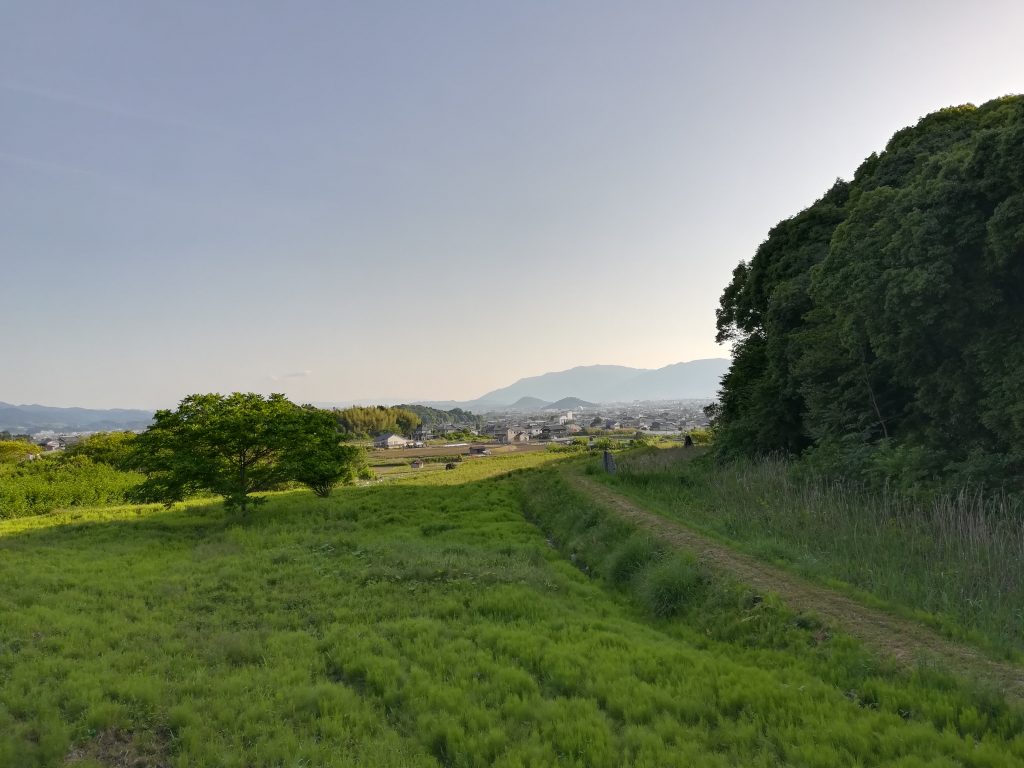
View looking south from the Yamanobe-no-Michi in Sakurai City.
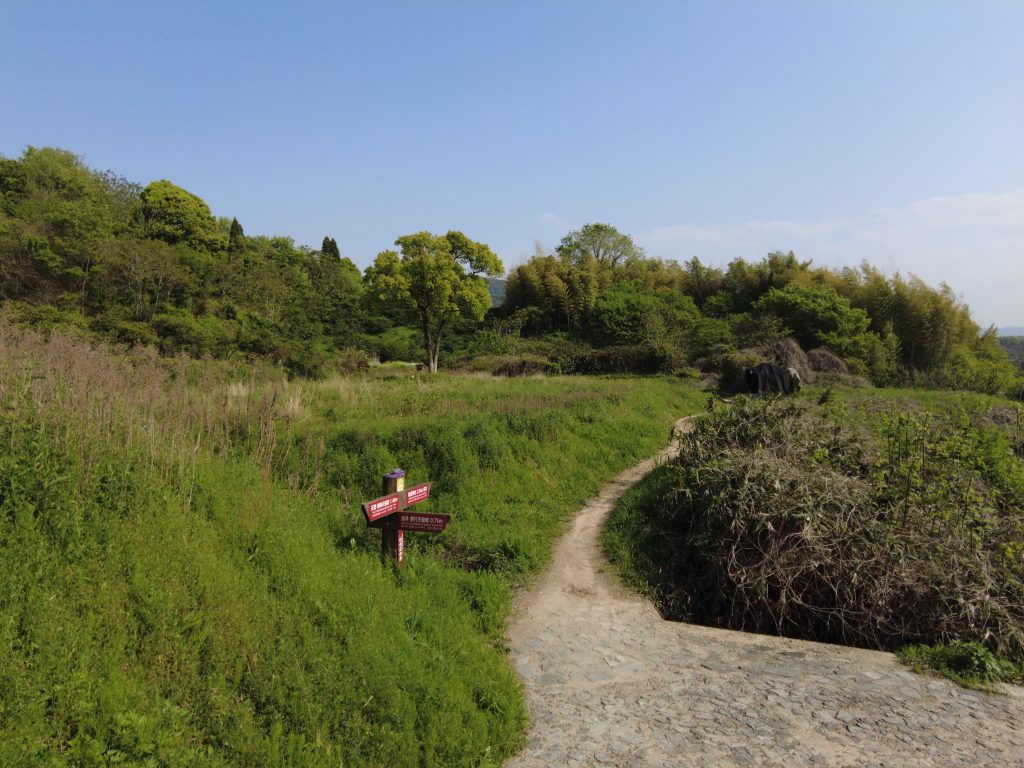
The path type will often change as it winds it way to the countryside.
Highlights of the Yamanobe-no-Michi (Tenri Station to Miwa Station)
There is no best direction to take for walking the Yamanobe-no-Michi, and in fact you have some convenient creative freedom as a local train line runs parallel just to the east of it, so if you get exhausted or feel the need to bail for any reason, there are several spots you can make an exit and head back to Nara City directly without any transfers required. This write-up will highlight places beginning from Tenri Station in the north to Miwa Station in the south, a distance of about 10 miles total.
Tenri Main Street
Located just in front of the Tenri Train Station, this long covered market street is, as the name suggests, the most lively street of Tenri City, and has nice a roof over it to shelter folks from the elements. It is also the most interesting way to go between Tenri Station and the Yamanobe-no-Michi route. Numerous shops selling all sorts of goods line both sides of this street, so why not take some time to check out a few things, or grab a bite to eat while you are here?
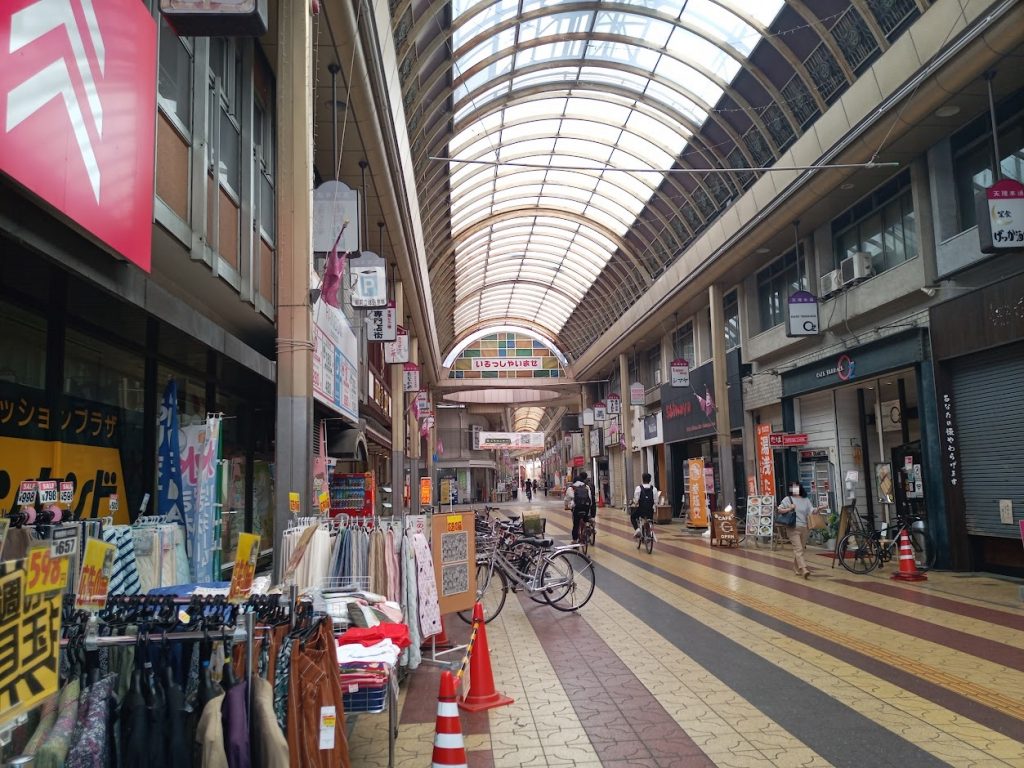
Tenri-kyo Headquarters & Tenri University
Tenri City is well-known in Japan for a religion that started in this area in modern times, now known simply as Tenri-kyo. The headquarters building, an impressively large structure which has an architectural style resembling a Shinto shrine, is found about 15 minutes on foot east from Tenri Station, just east of the covered section of the Main Street.
Located just to the south of the headquarters is Tenri University, which is a private Tenri-kyo religious school that also has a unique architectural style and is famous for its world-class Judo team.
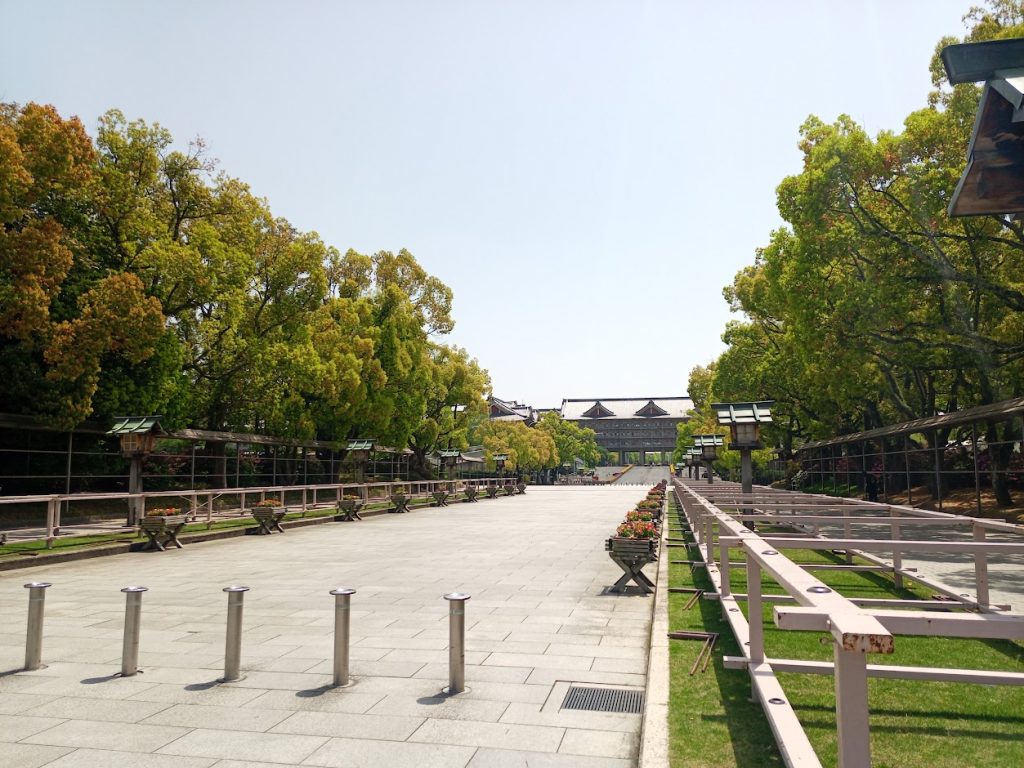
Looking towards Tenri University.
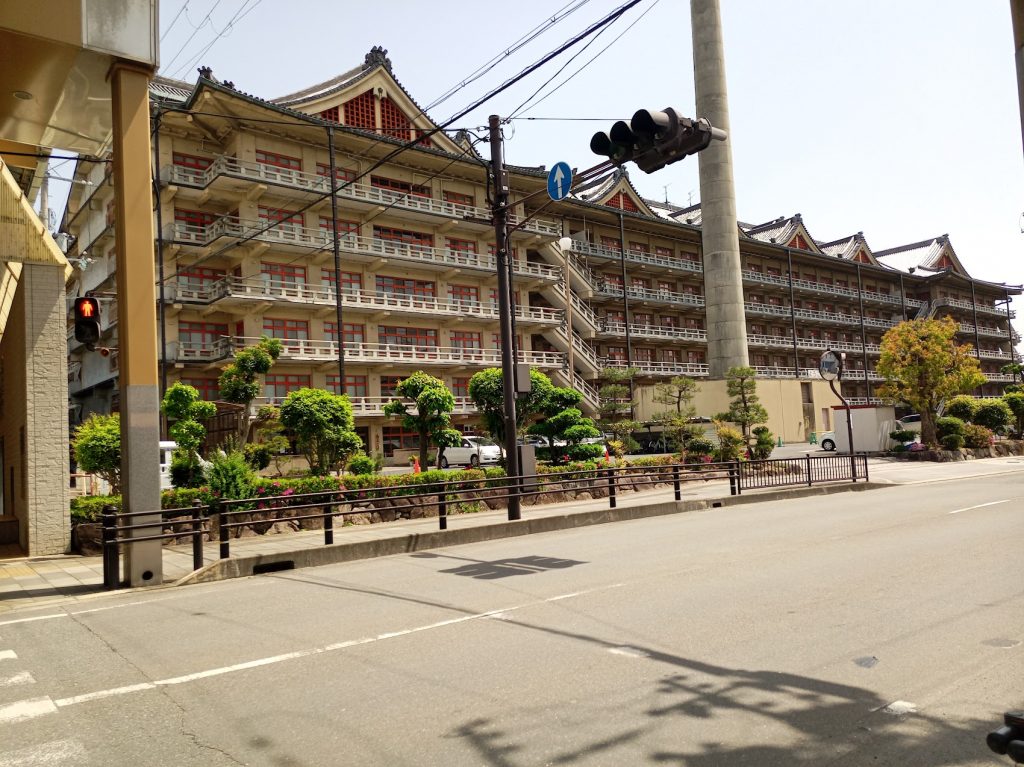
The unusual architectural style of Tenri University.
Isonokami Jingu Shrine
Located to the east of Tenri University, this Shinto shrine is one of oldest in the country, having links to the Japanese imperial family and ancient Shinto legends. It is believed that a sword enshrined here was a legendary weapon that once was used by the mythological first Emperor of Japan. Though it is a shrine associated with military might, perhaps its most famous modern feature are the dozens of colorful roosters which now roam freely around its grounds, clucking and crowing to the delight of visitors.
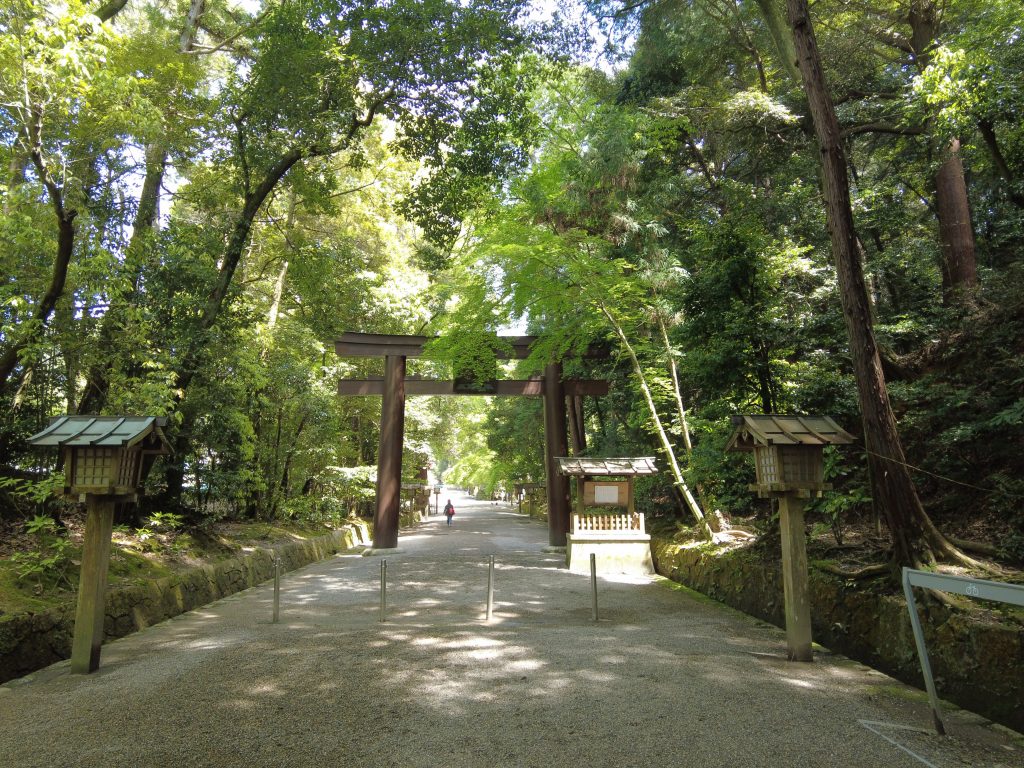
Entrance to the Isonokami Shrine.
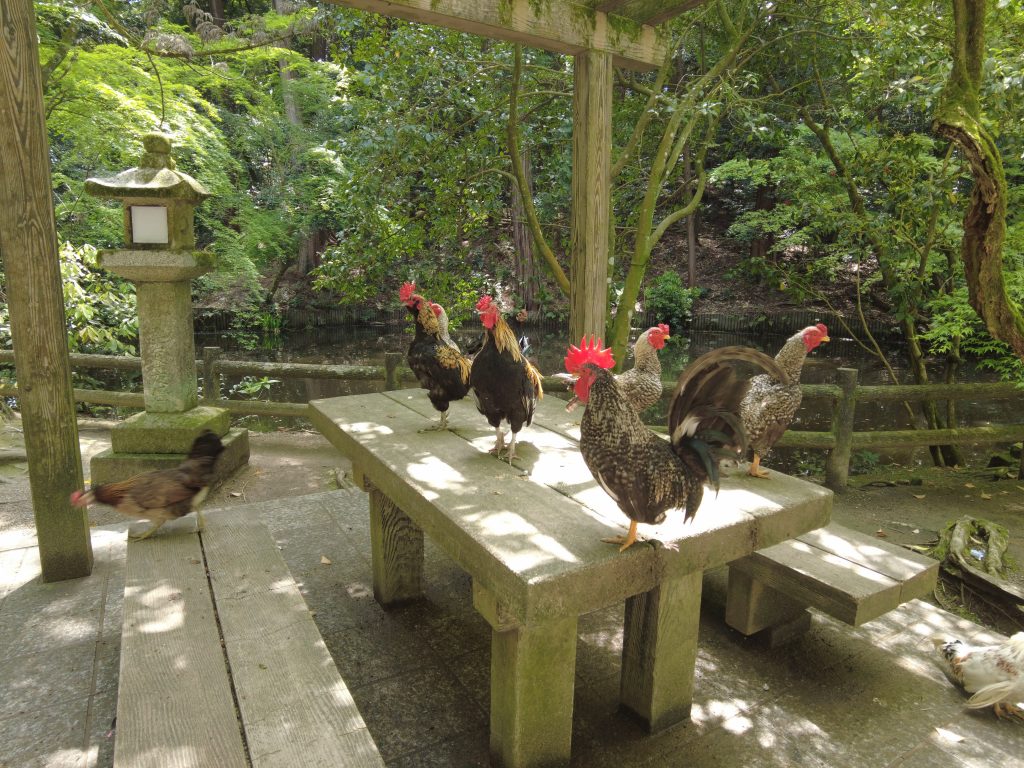
Some of the famous roosters of Isonokami Shrine.
Ancient Kofun Tomb Mounds
Kofun (古墳) is a term for the megalithic tomb mounds that can be found throughout country, which are thought to have first appeared in Japan during what is known as the Kofun period (300 – 538 CE). The range in size and shape, but often have a distinct key-hole style design that is surrounded by a moat. These ancient mounds were typically built for those who were designated as higher-ranking members of society, including members of the Imperial Family.
Several of these tombs can be found along the Yamanobe-no-Michi Route, including those of Emperor Sujin and Emperor Keiko; look for moats of water surrounding small forested hills and you will be sure to notice at least a few of them as you walk past.
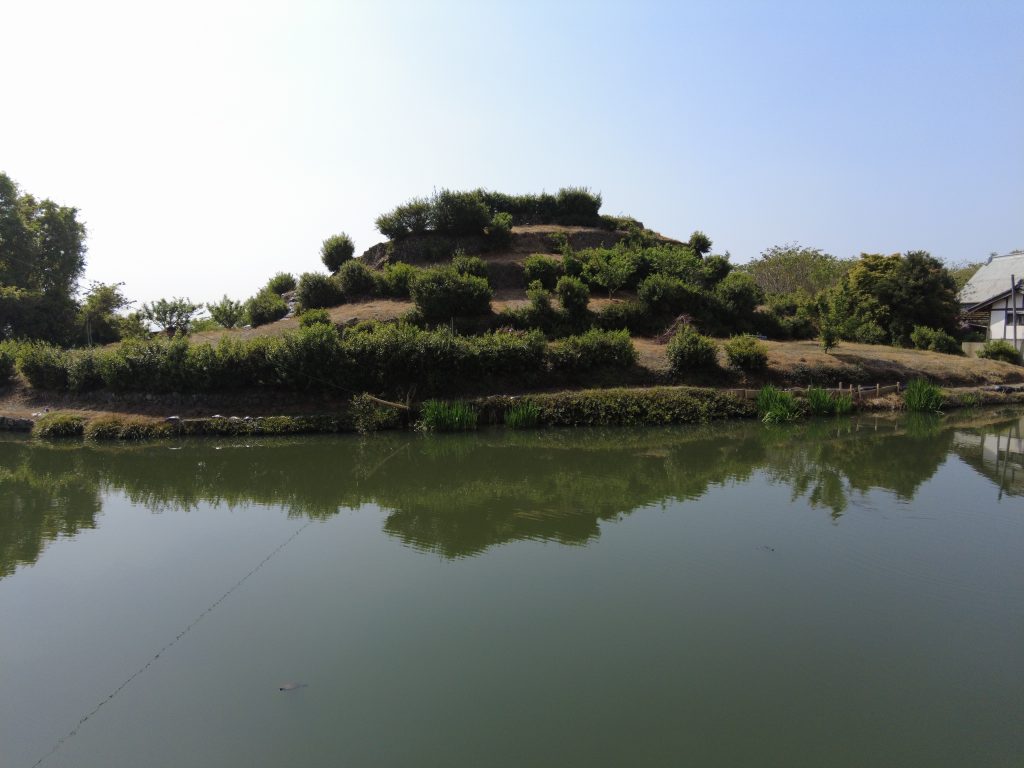
Nishiyamazuka Kofun (pictured here) is one of many old tomb mounds found along the route.
Unmanned Goods Booths
A symbol of the trust and communal goodwill that exists in countryside Japan, these unmanned booths can be found at different locations along the Yamanobe route and sell a variety of different products, depending on the season. This area is famous for fruit farms, such as citrus and persimmon, making them a common product sold by the bagful at these booths for bargain prices. If you think you might want to purchase a product from one of these booths, be sure to bring along a good amount of yen in coin form, as you often need to pay by depositing money directly into a lockbox.
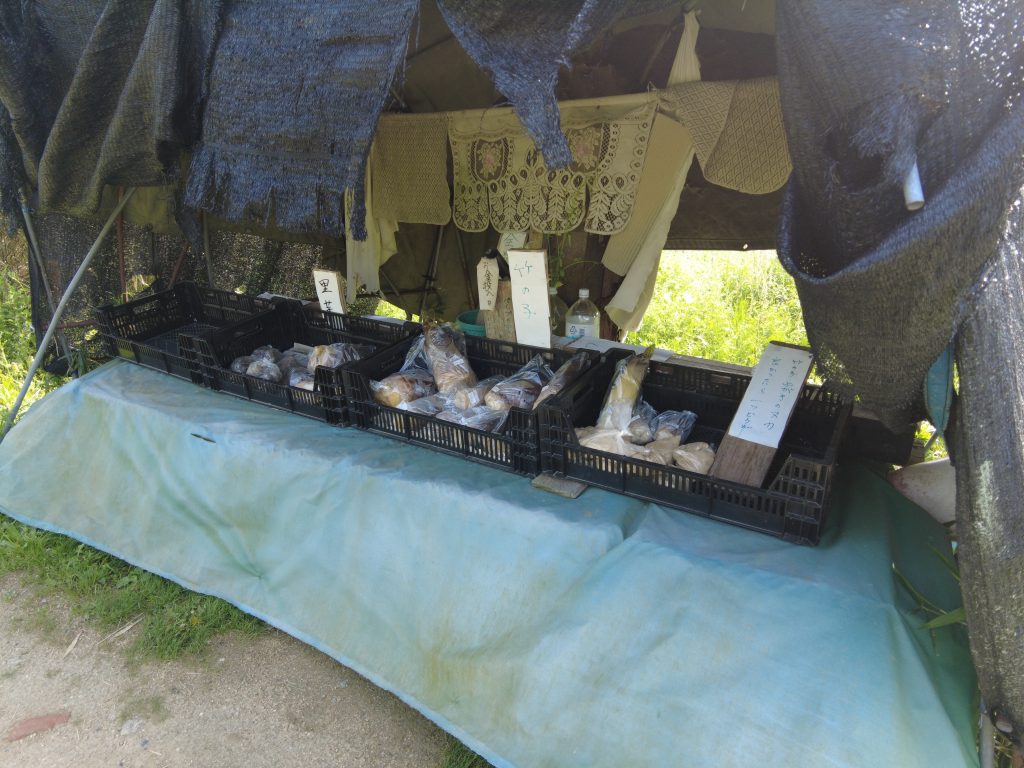
Unmanned booth selling takenoko (baby bamboo shoots) in spring.

Unmanned booth selling mikan citrus fruits in the fall.
Mt. Ryuo
While technically not part of the Yamanobe-no-Michi, this fun hike is accessible from the route from 2 entrances which are often hikes as a sort of loop: above Chogaku-ji Temple (north) and the above the Kofun mound of Emperor Sujin (south). There is a variety of interesting history attached to this mountain, the remains of which can still be seen to this day along the trail. Hikers can expect to find old stone statues of the Buddhist deity Fudo-myoo, forest Shinto shrines, and mysterious empty tomb mounds (some of which you can actually see inside of) as they hike the full loop course. The peak, which was once the location of a fort, maintains some of its terraforming from when it was fortified, with old stone and dirt stairways leading to a square-shaped summit viewpoint that gives an incredible view over the Nara Basin below.
Hiking to the peak and back down to the Yamanobe will add add another 2 to 3 hours of walking time to the course (roughly 6 KM in distance if you use both the southern and access trails), so please plan accordingly.
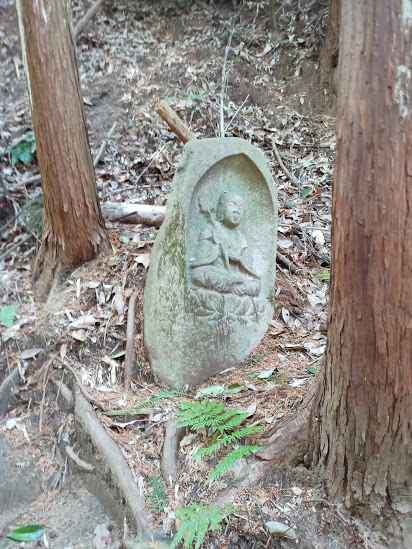
Buddhist statue found along the route that is starting to tip over due to erosion.
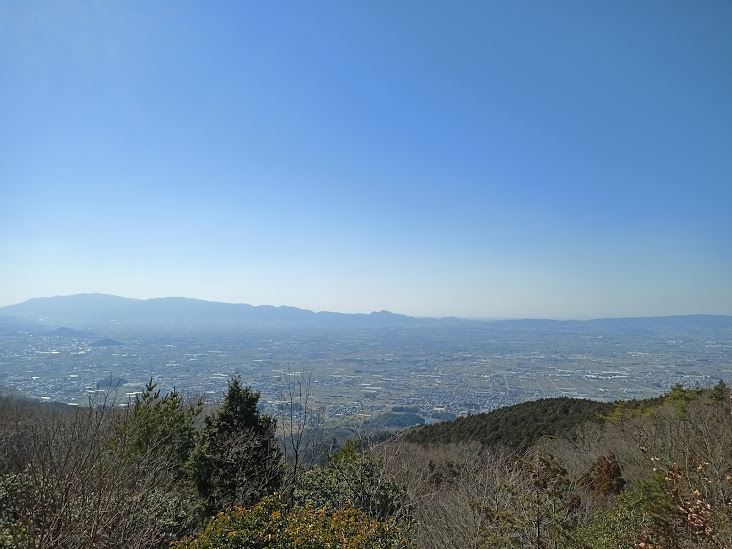
View from the peak of Mt. Ryuo.
Sumo Shrine
According to written record in the Nihon Shoki, Japan’s second oldest official collection of history first published in the 8th century, the first human sumo bout took place at this location in the 1st century CE (there is actually a legend about sumo originating from the gods). The match, organized by the legendary Emperor Suinin, was between Taima no Kehaya of Taima, and Nomi no Sukune of Izumo; both who whom were renowned for their incredible strength. In the end, Nomi no Sukune came out the victor, killing his opponent and establishing himself as Sumo’s first champion. It is said that the rules were a bit different from modern Sumo, as during this fight kicking was allowed, and of course, the act of killing one’s opponent is no longer the aim of the sport.
The Sumo Shrine, where the legendary match took place, features a statue of a sumo wrestler and also a sumo ring (usually covered with a tarp), where matches are sometimes held during festivals.
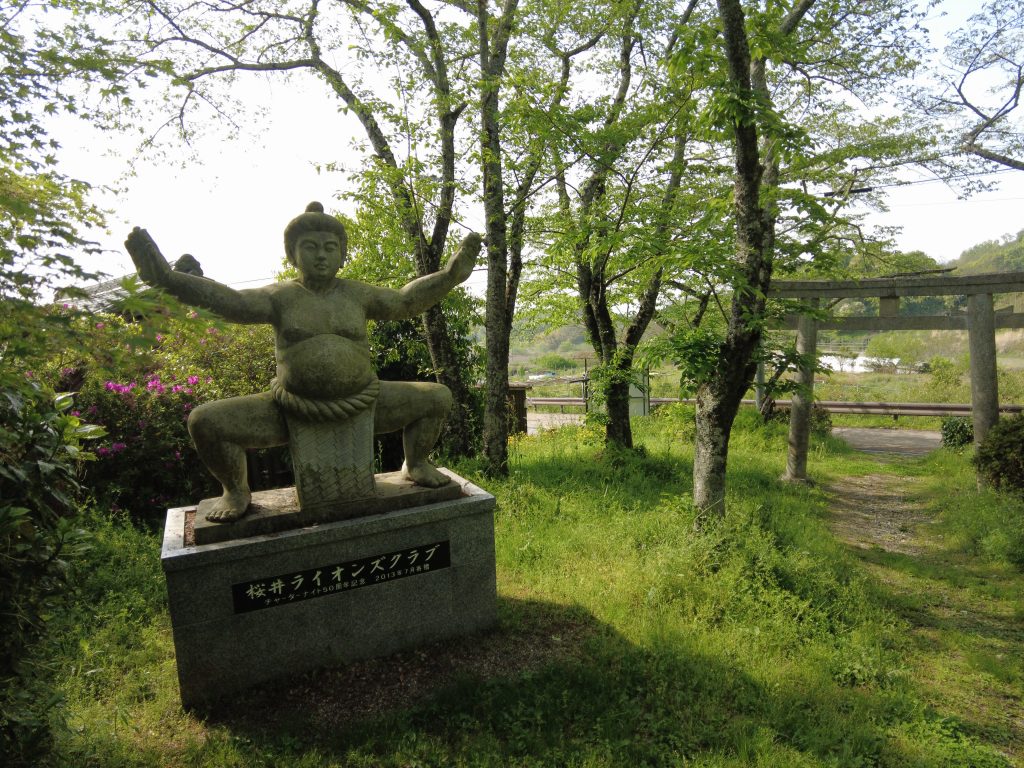
The Sumo Shrine
Mt. Miwa and the Omiwa Shrine
Mt. Miwa, located at the southern end of the route, is an ancient location that has been an important site for Shinto kami (god) worship since at least the time of the early formation of the country. The form of Shinto here is quite unusual in modern times as the god is believed to inhabit the Mt. Miwa itself, and therefore the entire mountain is protected as a highly sacred site that requires special permission to ascend. The Omiwa Shrine, which serves to facilitate worship of Mt. Miwa, is considered one of the oldest, if not the oldest Shinto shrine in the country, preserving the ancient form of Shinto nature worship established here. The kami of Mt. Miwa is legendarily reputed to be connected to the Imperial Family by blood, and is still worshiped as the god of rice and sake cultivation, making it an important deity indeed.
If you wish to hike Mt. Miwa, you will need to check the official website for information about whether or not the Sai Shrine (which manages the entrance) is allowing visitors for the day, and arrive before 2pm, when the mountain typically closes to climbers.
From the Omiwa Shrine, it is about a 10 minute walk to Miwa Station, from which you can easily access Nara Station to the north or head south to Sakurai Station and beyond.

View looking towards Mt. Miwa
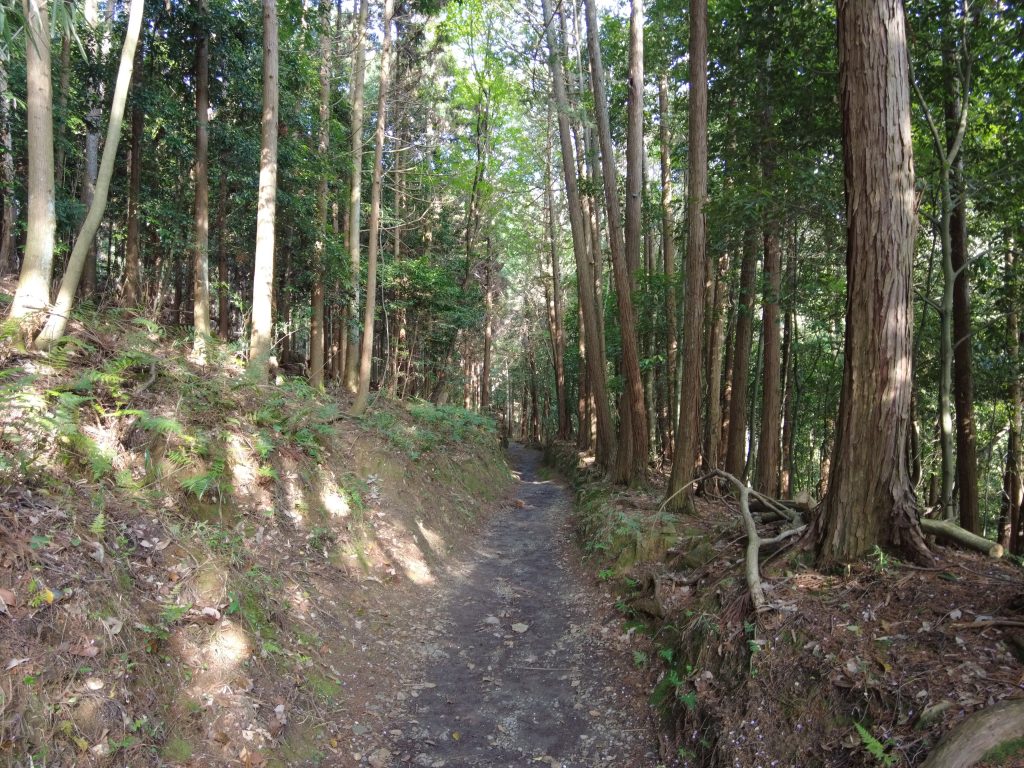
Hiking in the forest below Mt. Miwa.
From the Omiwa Shrine, it is about a 10 minute walk to Miwa Station, from which you can easily take a train to Nara Station in the north or head south to Sakurai Station and beyond.
Besides the above discussed locations there are MANY more historical spots, Shinto Shrines, Buddhist Temples, and other fascinating things to see along the Yamanobe-no-Michi that you can discover for yourself. Happy hiking!
Access:
To walk the full Yamanobe-no-Michi route, you can start from either Tenri Station or Miwa Station, though it is also possible to access different sections of the route from stations along the JR West Sakurai Line.

Did you know that Nara is considered the birthplace of Japan? How about taking a stroll through a historical village which reflects this deep history with an experienced guide? The “Yamanobe no Michi” which translates as “the path beside the mountains, ” is a popular walking course among tourists who…
from80,000JPY

01
FIND YOUR FAVORITE
TRIP ON OUR WEBSITE.
SEND US AN INQUIRY.

02
PERSONALIZE THE TRIP
TO YOUR INTERESTS
WITH OUR CONSULTANT.

03
20% DEPOSIT TO CONFIRM.
BALANCE PRIOR TO ARRIVAL.
PAYMENT BY CC OR TT.

04
WE WILL
MEET YOU
AT THE AIRPORT.

05
DISCOVER THE
TREASURES!